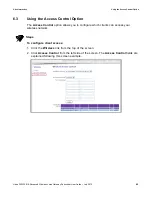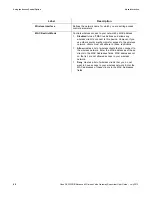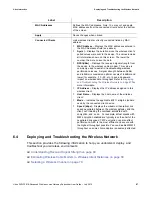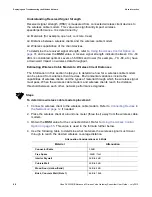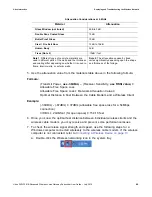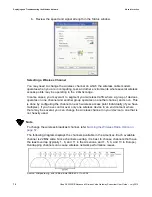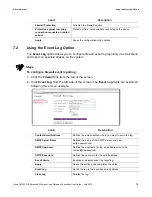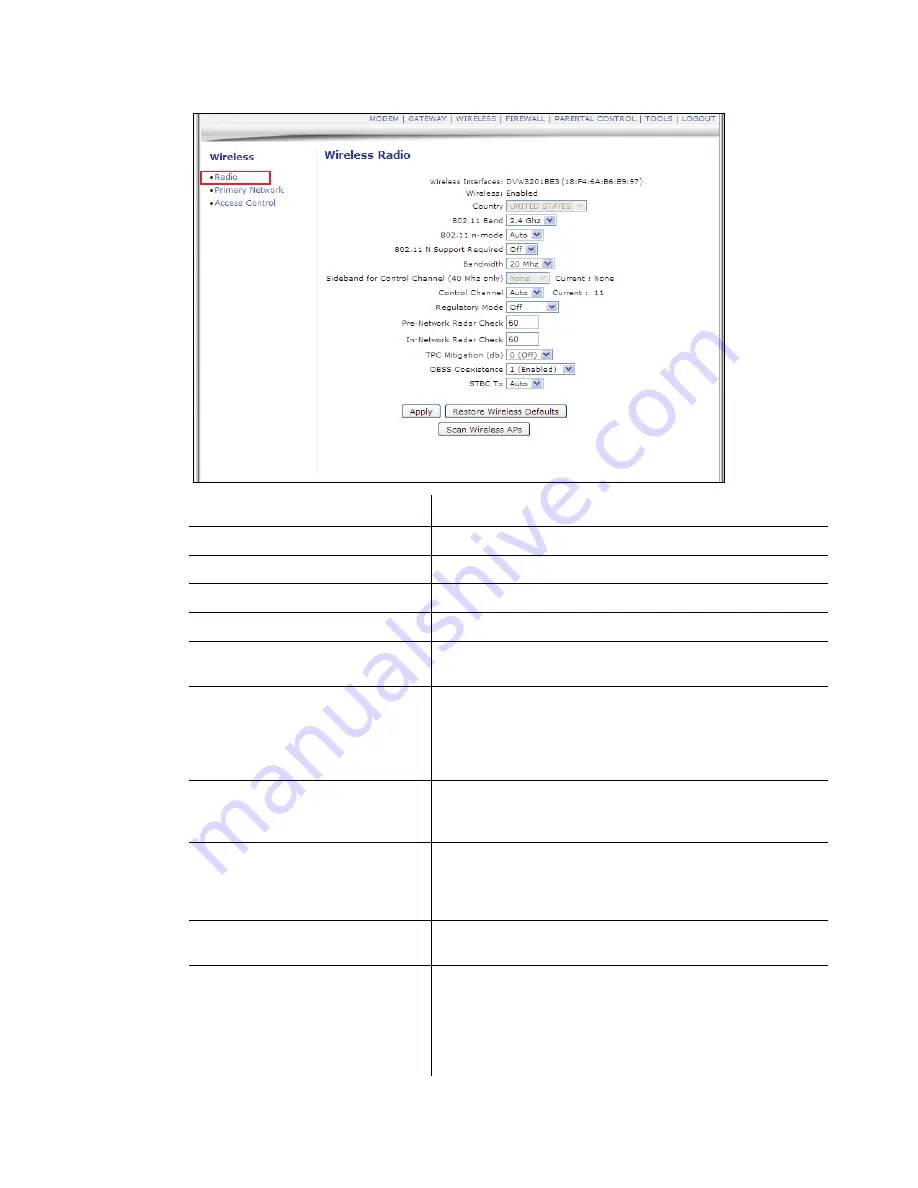
Using the Wireless Radio Option
Ubee Interactive
58
Ubee DVW3201B Advanced Wireless Voice Gateway Subscriber User Guide • July 2012
Label
Description
Wireless Interfaces
Displays the wireless name and MAC address.
Wireless
Displays the wireless radio’s status, Enabled or Disabled.
Country
Defines the country where this device is used.
Output Power
Sets the percent of the Output Power for the radio.
802.11 Band
Defines the radio band as 2.4Ghz or 5 Ghz.
Note
: The
distance coverage for 5Ghz is less than 2.4Ghz.
802.11 n-Mode
Sets the wireless networking standard. Select Auto to use
802.11 n mode when possible. This mode has a significant
increase in the maximum raw OSI physical layer data rate
from 54 Mbit/s to a maximum of 600 Mbit/s with the use of
four spatial streams when at a channel width of 40 MHz.
802.11 N Support Required
Defines whether 802.11n support is required (on) or not (off).
On forces the gateway to 802.11n mode and clients must
support 802.11n.
Bandwidth
Sets the bandwidth to 20Mhz or 40Mhz. For 40 Mhz, set the
sideband to lower or upper 20Mhz. 40 MHz channels double
the channel width. This allows doubling the PHY data rate
over a single 20 MHz channel.
Sideband for Control Channel
(40 Mhz only)
Sets the sideband control to the lower or upper 20 MHz when
the bandwidth is set to 40Mhz.
Control Channel
Selects a specific channel 1-11 to deploy the wireless
network. This allows you to set the operating
frequency/channel depending on your particular region.
Channel selection can have an impact on wireless networking
performance. For more information, refer to
Selecting a
Wireless Channel on page 70






















